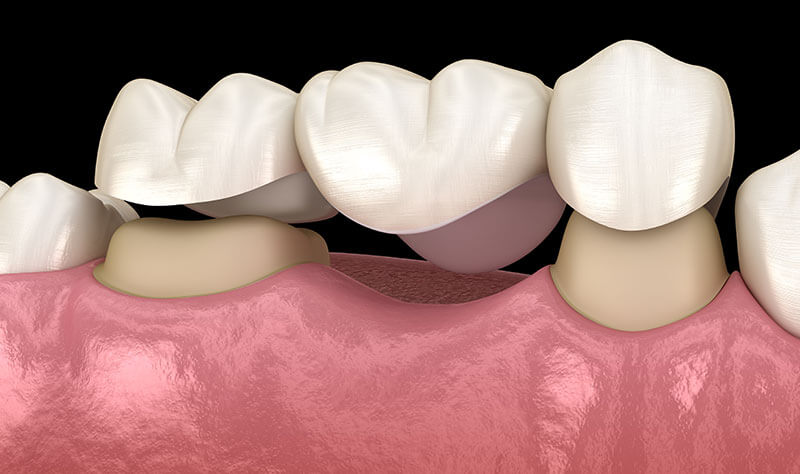There are a number of reasons why teeth are lost: accidents, irreparable tooth decay, breakages, wear and tear, infections and gum disease.
Some patients cope with tooth loss better than others but most people would like their missing teeth replaced. In the majority of cases it is advisable to replace missing teeth. It helps keep the remaining teeth in good health (prevents drifting, leaning over and over eruption), spreads the chewing load more evenly, prevents speech impediments and rejuvenates the smile.
With advances in modern dentistry we have a number of techniques available for replacing missing teeth.

Dental implants
Dental implants are individual toothlike fixtures replacing a tooth or teeth. A small screw-shaped titanium implant is placed inside the jawbone to replace the root of the tooth, and a few months later when the implant has integrated into the surrounding bone a crown is custom-made and attached.
Implants are regarded as the best way of replacing missing teeth. They are independent of the neighbouring teeth; placed shortly after the loss of the original tooth they prevent the natural decline in bone volume and they look and feel like real teeth.
Patients are often nervous about the idea of undergoing surgical intervention in the bone, but in reality, the procedure is less involved than an average extraction, root canal treatment or a complicated large filling. Also, post-operative discomfort is minimal with patients often not needing any pain relief.

Bridges
Fixed restorations that are attached to the teeth surrounding the gap, made of precious metal and porcelain or porcelain only.

Full or partial dentures
Removable metal or plastic framework that have teeth attached, usually replacing a number of teeth.
All forms of dental restorations require a good hygiene regime to ensure that the treatment is long-lasting and successful.
For all our restorative work we use the very best local laboratories to achieve successful outcomes that meet our and our patients’ expectations.
Missing teeth? At the Family Dental Clinic in Chichester, we offer expert solutions tailored to you. Call 01243 771171 today to book a consultation and find out how we can restore your smile with confidence and care.